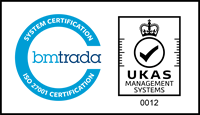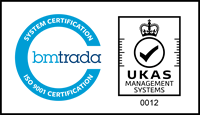Posted on: Friday May 12, 2023
Without a doubt, employee engagement has become a hot topic within all sectors and the world of employment. Defining the desired employee experience and achieving a strong level of job satisfaction are crucial in increasing productivity, reducing absenteeism and assisting with both recruitment and retention.
The average employee working week has changed dramatically since the covid pandemic. Whether workers are based in an office, depot, factory or at home, employers have thought hard and fast over the past couple of years about creating new working environments to enable employees to be effective, while also giving them an element of flexibility, which has evolved from being a nice-to-have pre-pandemic to a mainstream requirement. How that manifests is constantly changing and will be different for each company. For example, we have seen some very interesting results from the four-day working week trial carried out last year, with over 90% of the companies that took part retaining it as an offering. Two thirds of those companies had fewer than 25 employees, and it remains to be seen whether it will work for larger companies, but condensing hours into a four-day week still be a way for smaller businesses to differentiate in the market if they’re unable to pay top dollar.
When laying out an Employee Value Proposition, a lot of attention is now being paid to employees’ mental, social and financial health and wellbeing. This is a multi-faceted mesh of considerations which needs to be able to flex and cater for every worker in each demographic. Here are four key elements to help drive employee engagement and satisfaction.
- Know your employees
Only by being brave enough to look under the bonnet of your operation can you expect to move beyond assumptions in relation to what your workers want. In reaching out to employees and taking the time to listen, we can measure key drivers for satisfaction, performance and turnover.
Focus groups are a good way to gain a deeper understanding. Workshops, surveys and feedback forms also work, as well as exit interviews. Only by gaining this level of honest insight can we understand any challenges we face in recruitment and retention, and highlight common misalignments between the expectation and the reality of an Employee Value Proposition.
- Know your company demographic
Beyond knowing how our staff are feeling, it is also vitally important for company leaders to understand their workforce demographic. By analysing the overall worker profile – for example by gender, ethnicity, age, tenure, level, and family status - leaders and HR directors can plan and deliver an overall reward and benefits package that can flex to meet workers’ needs. If a company gets this right, it should be able to motivate workers at various stages of the employment life cycle, whether it’s a 22-year-old apprentice looking to trade in holiday entitlement, or a 60-year-old contemplating their exact retirement date and looking to make increased pension contributions.
- Support, protect and connect
Even five or ten years ago, a benefits package often boiled down to a pension, health insurance and a gym membership, and that was largely because companies were not taking the time to understand their workers. Today, armed with better knowledge, business leaders are building Employee Value Propositions that provide those same core benefits but can also support and protect in a variety of new and different ways.
Discounts and savings – In taking advantage of new digital HR platforms, companies can literally make their employees' pay go further. Apps such as HAPI enable HR to send staff genuine savings and discount vouchers for groceries, high street brands, eye tests or eating out.
Financial support - Beyond these immediate savings, companies can also offer workers additional peace of mind and help them build financial resilience through a variety of key support services – workshops, confidential helplines, online resources – in relation to financial planning, debt management and loans.
Physical and Mental Wellbeing – increasingly, companies are now seeing these two elements through the same ‘wellbeing’ lens. Gym membership and cycle-to-work schemes can encourage activity and a better work-life balance for a certain cross-section, while mindfulness courses and advice around healthy eating can apply to every employee, regardless of age or background. Increasingly, Employee Assistance Programmes also provide support online or over the telephone, from Online GPs to life coaching and counselling.
Social network – In the best examples we see, underpinning all of this is an effort to connect workers with each other, and with the business. Recognition schemes are now widely adopted as part of the EVP to encourage workers and managers to nominate peers, reward strong performance and champion the kind of contagious behaviour that drives company culture. By their nature, these programmes also drive employee engagement through feedback and a sense of ‘having their say’.
- Empower access and communications via the power of Digital
In the same way that seeking input is key to understanding our workforce, the ability to communicate back to employees anywhere and everywhere is crucial, and these days that tends to mean going digital. Recognition schemes certainly work best ‘live’, in the moment, but offering your entire reward and benefits package through a smartphone app is the only way to put everything – from pay slips and holidays to vouchers and salary sacrifice - in the palm of every staff member’s hand, 24/7.
With push notifications and instant messaging, not only can you reach employees at the optimum time, you also break down any barriers that exist for remote workers. And with analytics tools enabling the measurement of every interaction and initiative, constant evolution and improvement is almost guaranteed.
Cost vs Value – What Really Matters in Health Benefits?
When it comes to creating employee health benefits, there’s always a tug-of-war between keeping costs low and focusing on the actual value those benefits bring.
Posted on: 11 April 2025 by Andrew Walker, New Business Development Director
Top Tips to Improve a Misfiring Recognition Strategy
Whether you’re a professional footballer, engineer or care worker, happiness at work relies on feeling valued, appreciated and respected.
Posted on: 28 March 2025 by Andrew Walker, New Business Development Director
Brace Yourselves: Reward Storm Incoming
In even the most optimistic assessment of the current situation, it is hard to foresee a situation where a substantial portion of workers are not left underwhelmed by their pay offers in 2025.
Posted on: 13 March 2025






